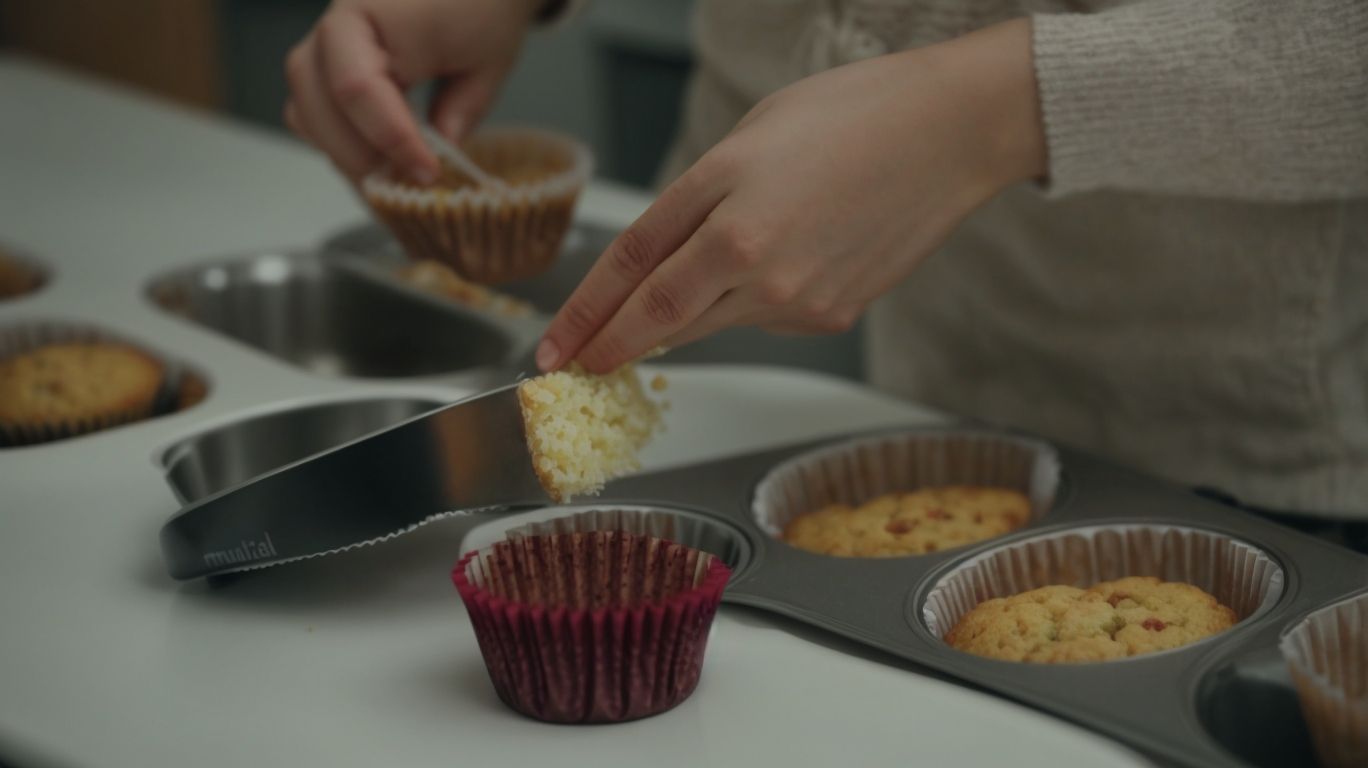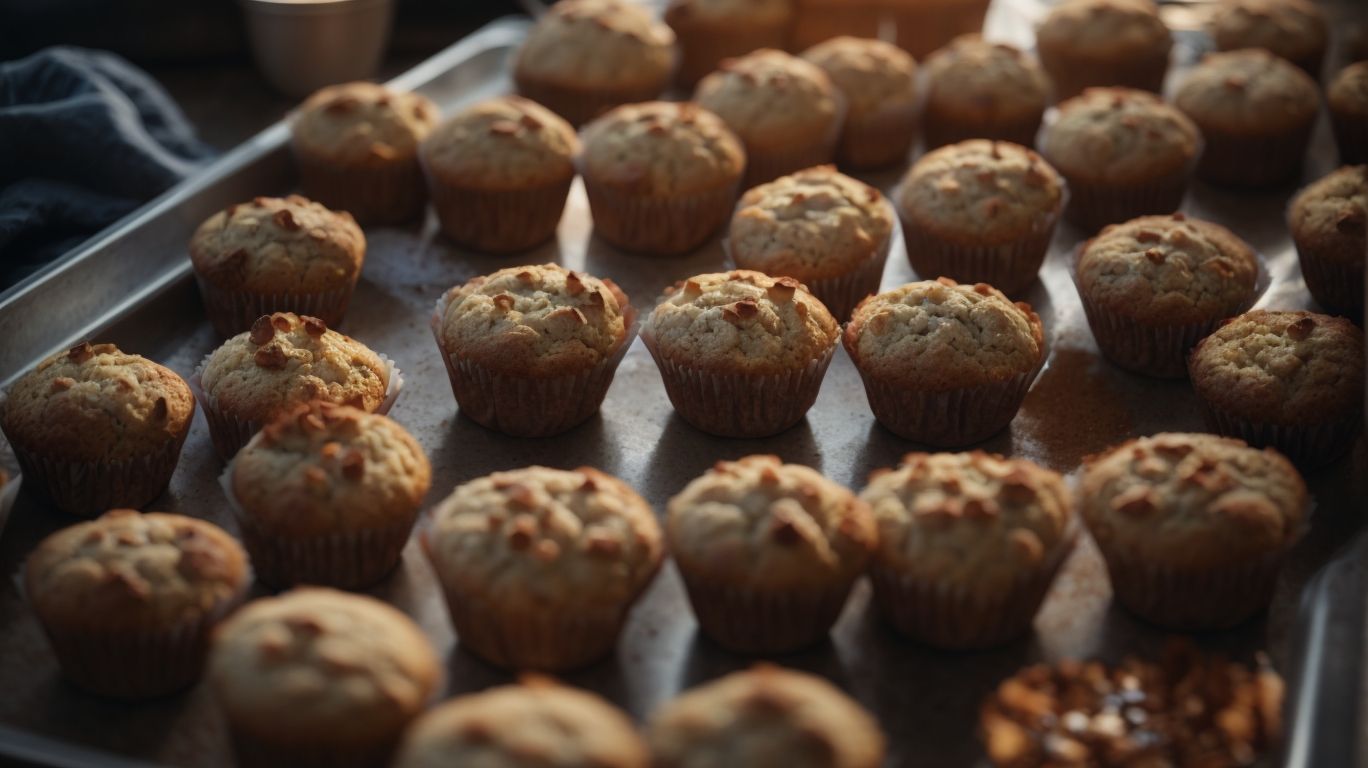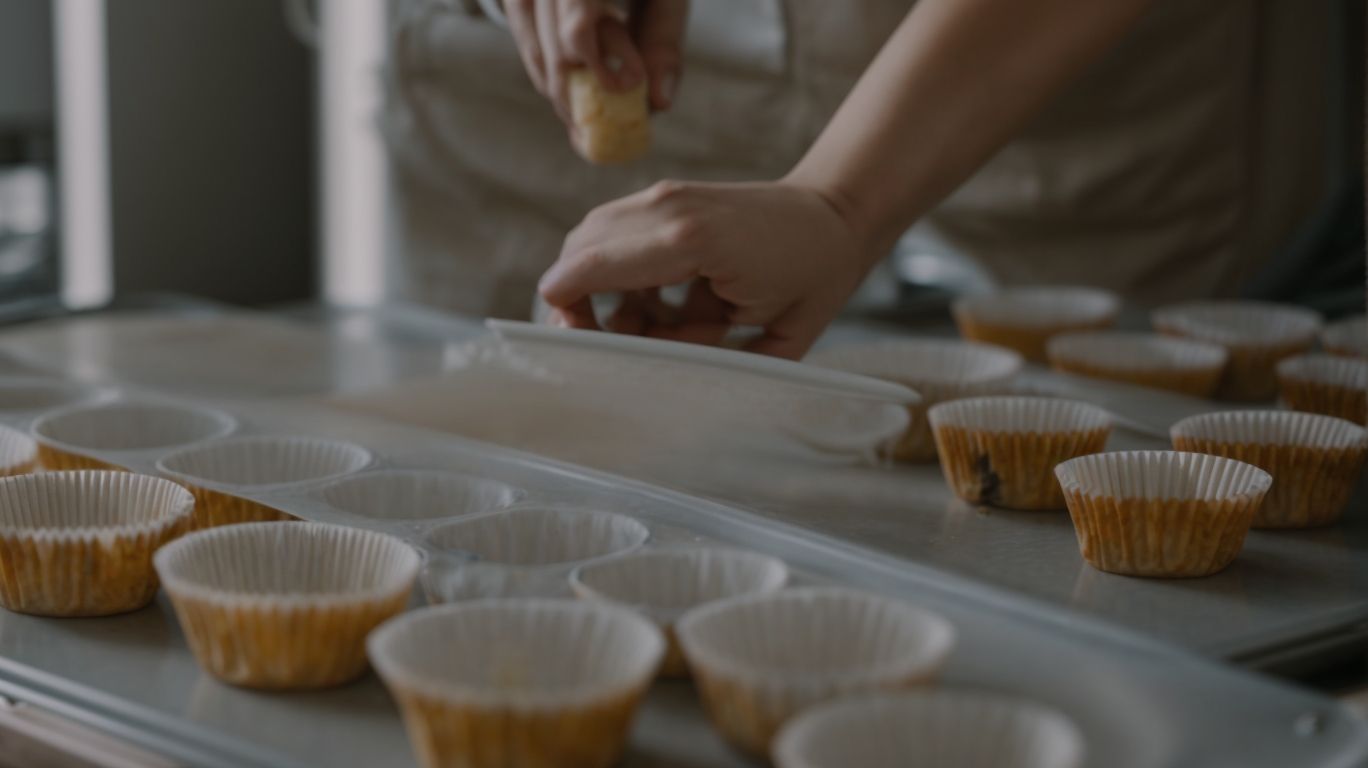How to Bake Muffins Without a Muffin Pan?
Are you craving homemade muffins but don’t have a muffin pan on hand?
Do not worry, there are alternative methods to bake delicious muffins without the traditional pan.
From using cupcake liners to baking dishes, there are creative ways to achieve the perfect muffin shape.
In this article, we will explore the reasons why you might want to bake muffins without a muffin pan, the alternatives available, the steps to follow, and some helpful tips and tricks for success.
Let’s get baking!
Key Takeaways:
Why Would You Want to Bake Muffins Without a Muffin Pan?
Baking muffins without a muffin pan can be a convenient alternative for various reasons, whether due to the unavailability of a muffin pan or a desire to experiment with different baking methods.
By bypassing the need for a specific muffin tray, you open up a world of creativity in your baking endeavors. Not being constrained by the traditional structure of a muffin pan allows you to explore unique shapes and sizes, turning your muffins into individual works of art. This flexibility also extends to experimenting with different materials like silicone molds, ramekins, or even cupcake liners, all of which can yield distinct textures and visual appeal to your baked goods.
You Don’t Have a Muffin Pan
The primary reason for baking muffins without a muffin pan is the absence of this essential baking tool, prompting the need for alternative methods to achieve delicious baked goods.
When faced with this situation, individuals can opt for creative substitutions like using silicone cupcake liners, ramekins, or even a mini loaf pan to bake muffins.
A well-greased baking sheet can serve as a make-shift solution by forming tin foil into small cups to hold the batter securely while baking.
For those looking for a quick fix, oven-safe jars or molds can also come in handy as alternative containers for baking muffins without a muffin pan.
You Want to Try a Different Shape
Exploring different shapes for muffins can be a fun and creative endeavor, leading to unique presentations and textures that deviate from the traditional muffin form.
Instead of sticking solely to the classic muffin tray, consider using ramekins or loaf pans to bake your muffins. This simple switch in baking vessel can yield exciting results by altering the muffins’ shape and surface area for a different baking experience. The versatility of muffin batter allows for experimentation with various molds, leading to diverse textures and flavors in the finished product. Embracing alternative shapes opens up a realm of possibilities in the world of baking, sparking innovation and delight among both bakers and eaters alike.
You Want to Save Time and Space
Opting to bake muffins without a muffin pan can streamline the baking process and save valuable time and space in the kitchen, offering practical benefits for busy individuals.
One efficient alternative method for baking muffins without a muffin pan is using silicone baking cups or liners, which are reusable and eliminate the need for constant cleaning. These cups are versatile and can be placed directly on a baking sheet, thus reducing preparation time and making cleanup a breeze.
Another space-saving option is the use of well-greased ramekins or small oven-safe bowls to bake individual muffins. This method allows for a variety of flavors to be baked simultaneously, providing a convenient solution for those craving multiple muffin types.
What Are the Alternatives to a Muffin Pan?
When you don’t have a muffin pan, there are several creative alternatives that can serve as effective substitutes for baking delicious muffins.
One popular alternative to a muffin pan is using muffin liners. These paper or foil liners can be placed directly on a baking sheet, allowing you to bake muffins without the need for a pan. The benefit of using muffin liners is that they ensure easy removal of muffins and help maintain their shape.
- Another option is to use ramekins, which are small, oven-safe ceramic or glass dishes. Ramekins are great for creating individual-sized muffins and can add a touch of elegance to your baking.
- If you prefer a more flexible approach, consider using baking dishes. These versatile dishes come in various shapes and sizes, allowing you to customize your muffin size and shape.
- For a unique twist, try baking muffins on a cookie sheet. While unconventional, cookie sheets can create flatter, crispy-edged muffins that some may find appealing.
Use a Cupcake Liner
Utilizing cupcake liners is a convenient method to bake muffins without a traditional muffin pan, offering easy cleanup and versatile serving options.
One of the key advantages of using cupcake liners in place of a muffin pan is the effortless removal of the muffins from the liners once baked. The liners not only prevent sticking but also showcase beautifully shaped muffins with minimal risk of breakage during extraction. You can play around with different liner designs to create a visually appealing display. This method provides a hassle-free baking experience and allows for unique presentation opportunities for your delicacies.
Use a Ramekin
Ramekins can double as individual muffin molds, providing a unique baking experience that yields perfectly shaped muffins without the need for a traditional muffin pan.
If you are looking to add a touch of elegance to your baked goods, ramekins offer a versatile solution. These small ceramic or glass dishes not only help in creating individual portions but also ensure that each muffin maintains a uniform shape during the baking process. When preparing your muffin batter, remember to grease the inside of each ramekin lightly to prevent sticking. The beauty of using ramekins lies in their ability to elevate your muffins, making them an ideal choice for gatherings or special occasions.
Use a Baking Dish
A baking dish can be repurposed to bake muffins, offering a larger capacity for batch baking and enabling the creation of muffins without the constraints of a traditional muffin pan.
When using a baking dish for muffin making, its versatility shines through as you have the freedom to shape your muffins in various sizes and forms. This adaptability allows for experimenting with different muffin styles and ingredients, catering to your preferences and creativity.
Utilizing a baking dish not only increases the quantity of muffins you can bake at once but also provides a sturdy and reliable base for even baking, ensuring that each muffin is perfectly cooked.
Use a Cookie Sheet
Transform a cookie sheet into a makeshift muffin pan by creating individual portions of muffin batter, allowing for a unique baking experience with a flat, tray-like appearance.
This novel approach not only saves space in your kitchen but also offers the convenience of baking multiple muffins at once. Simply line the cookie sheet with paper liners or grease it lightly, then divide your muffin batter evenly into each well. The flat surface provides even heat distribution, resulting in uniformly baked muffins. Monitor the baking time, as the muffins may cook faster due to the thinner walls of the cookie sheet as compared to a traditional muffin pan. This inventive technique opens up a world of possibilities for experimenting with different flavors and fillings!
What Are the Steps to Bake Muffins Without a Muffin Pan?

Credits: Poormet.Com – Alexander Davis
Baking muffins without a traditional muffin pan involves a few key steps that ensure your muffins are baked to perfection using alternative baking tools.
Prepare your muffin batter according to your favorite recipe. Mix all the dry ingredients like flour, sugar, baking powder, and salt in one bowl. Then, in another bowl, whisk together the wet ingredients such as eggs, milk, and oil until well combined.
Next, to mimic the muffin pan’s shape, you can use cupcake liners or parchment paper. Simply place these liners or paper cups on a baking sheet, spacing them apart to allow room for the batter to expand during baking.
Adjust your oven temperature as necessary – most recipes recommend preheating your oven to a specific temperature before placing the muffins in the oven. Keep a close eye on the muffins, as baking times may vary without the pan; usually, they are baked until a toothpick inserted in the center comes out clean.
Prepare the Batter
Creating the perfect muffin batter is the first crucial step in baking muffins without a traditional muffin pan, ensuring that your baked goods turn out moist and flavorful.
To begin, gather all the necessary ingredients like flour, sugar, baking powder, salt, eggs, milk, and melted butter.
Start by whisking together the dry ingredients in one bowl to ensure they are evenly distributed.
In a separate bowl, beat the eggs and then mix in the milk and melted butter.
Slowly incorporate the wet mixture into the dry ingredients, being careful not to overmix. This will help maintain the muffins’ light and airy texture.
Once the batter is well combined, you can spoon it into well-greased muffin tins or use cupcake liners for easy removal after baking.
Grease the Alternative Pan
Before pouring in the muffin batter, it’s essential to grease the alternative pan adequately to prevent sticking and ensure easy removal of the baked muffins.
Greasing the pan properly plays a crucial role in the baking process. When using baking dishes or pans as alternatives to a muffin pan, the grease forms a protective layer between the batter and the pan’s surface, preventing the muffins from adhering and tearing when you try to remove them.
This simple step saves you from the frustration of ruined muffins and ensures a smoother baking experience. It also helps in maintaining the shape and appearance of the muffins once they are out of the oven, giving them a professional finish.
Fill the Pan with Batter
Carefully portion out the muffin batter into the prepared alternative pan, ensuring that each portion is filled to the appropriate level for even baking and consistent results.
When filling the pans with muffin batter, you want to make sure not to overfill them, as this can lead to uneven baking and overflowing during the cooking process. Portion control is key here. Use a spoon or an ice cream scoop to distribute the batter evenly among the sections of the alternative pan. This helps ensure that each muffin gets just the right amount of batter for optimal rising and texture.
By distributing the batter uniformly, you’ll also avoid some muffins being undercooked while others are overcooked. Consistency in portioning out the muffin batter is essential for creating a batch of muffins that are all golden-brown and perfectly cooked. Remember, each individual portion contributes to the overall appearance and taste of your muffins.
Adjust Baking Time and Temperature
When baking muffins without a muffin pan, it’s crucial to adjust the baking time and temperature to accommodate the different baking conditions and achieve the desired muffin shape.
For instance, when opting for alternative baking methods like using ramekins or a baking sheet, monitoring the oven temperature becomes even more important. To ensure that your muffins bake evenly and don’t burn on the bottom, consider reducing the baking temperature slightly to prevent excessive browning. Adjusting the baking time may also be necessary depending on your oven’s heating pattern and the size of the muffin molds you are using.
Tips and Tricks for Baking Muffins Without a Muffin Pan
Enhance your muffin baking experience with these valuable tips and tricks for successfully baking muffins without a traditional muffin pan, ensuring delicious results every time.
If you find yourself without a muffin pan, fret not, as there are handy alternatives to help you achieve that perfect bake. One effective method is to use foil or paper liners to replicate the shape and support of a muffin pan. Simply place the liners on a baking sheet or tray, ensuring they are securely positioned to hold the batter.
Remember, when filling the muffin cups, it’s essential not to overfill to prevent spillage and ensure proper rise. About two-thirds full is usually an ideal amount. During baking, rotate the pans halfway through to ensure even cooking and a uniform golden hue on your muffins. This simple step can make a significant difference in the overall texture and appearance of your treats, resulting in a batch of beautifully baked muffins.
Use Non-Stick Spray or Butter to Grease the Pan
Coating the alternative pan with non-stick spray or butter before adding the batter can prevent muffins from sticking and simplify the unmolding process.
Not only does this non-stick spray or butter ensure easy release, but it also promotes uniform baking by offering a smooth surface for even heat distribution throughout the muffin. Using these greasing options on alternative pans such as foil or parchment paper liners gives flexibility in shape and size, allowing you to experiment with different designs for your muffins. The use of non-stick spray or butter helps create a barrier between the batter and the pan, resulting in beautifully baked muffins that retain their shape without any breakage or mess.
Use Parchment Paper for Easy Removal
Lining the alternative pan with parchment paper can facilitate effortless removal of baked muffins and simplify the cleaning process, offering convenience and practicality.
One of the main benefits of using parchment paper is its non-stick nature, which ensures that the muffins do not stick to the pan, making them easy to lift out once baked. The paper creates a barrier between the pan and the batter, preventing any potential sticking or burning, resulting in perfectly shaped muffins. The ease of cleanup provided by parchment paper means minimal mess to deal with afterwards, saving time and effort in the kitchen.
Fill the Pan Only 2/3 Full
To prevent overflow and ensure proper rising, fill the alternative pan only two-thirds full with muffin batter, allowing room for expansion during the baking process.
Choosing the right pan size is crucial in achieving perfectly baked muffins. Overfilling the pan can lead to the batter spilling over and ruining the shape of the muffins. When filling the muffin cups, be mindful of the two-thirds rule to give the batter enough space to puff up and create those beautifully domed tops. This technique not only helps in maintaining the shape of the muffins but also ensures even baking throughout. Remember, proper filling is the key to bakery-worthy muffins every time!
Rotate the Pan During Baking
For even baking and consistent results, rotate the alternative pan containing muffins halfway through the baking process to ensure uniform heat distribution and optimal muffin texture.
When you place the sheet pan with the muffin batter into the oven, let the muffins bake for about half of the total baking time. Then, carefully remove the pan from the oven. To rotate the pan, quickly grab the handle and turn it around 180 degrees. This simple action helps to offset any hot spots in the oven, preventing uneven browning or undercooking of the muffins.
Conclusion

Credits: Poormet.Com – Joe Lopez
Exploring alternative methods for baking muffins without a traditional muffin pan opens up a world of creative possibilities and flexibility in the kitchen for baking enthusiasts.
Using different baking tools and shapes allows for a unique twist on classic muffin trays. For a makeshift muffin pan, try using ramekins, tart pans, or even a well-greased cookie sheet with muffin cups made from parchment paper. Experimenting with these alternatives not only adds variety to your baking repertoire but also encourages out-of-the-box thinking in the kitchen. Pour your batter into unconventional molds and witness how new shapes can elevate the presentation of your muffins.
Frequently Asked Questions
1. How do I bake muffins without a muffin pan?
If you don’t have a muffin pan on hand, you can still bake delicious muffins using alternative methods. Here are a few options to consider:
2. Can I use a regular baking pan to make muffins?
Yes, you can use a regular baking pan to make muffins. Simply pour the batter into the pan and bake as usual. Just be aware that the shape of the muffins may be different and you may need to adjust the baking time.
3. What can I use instead of a muffin pan?
There are several household items that can be used as a substitute for a muffin pan, such as ramekins, mason jar lids, or a mini loaf pan. You can also use parchment paper or aluminum foil to create makeshift muffin cups.
4. How can I make muffin cups without any special tools?
To make muffin cups without any special tools, you can use parchment paper or aluminum foil. Simply cut the paper or foil into squares, press them into the muffin tin, and fill with batter.
5. Can I use silicone baking cups to make muffins without a pan?
Yes, silicone baking cups can be used to make muffins without a pan. These cups are flexible and can be placed on a baking sheet, making it easy to bake muffins without a traditional muffin pan.
6. What are some tips for making muffins without a muffin pan?
Here are a few tips for successfully making muffins without a muffin pan:
– Grease your alternative pan or muffin cups well to prevent sticking.
– Fill the cups or pan only 2/3 full to allow room for the muffins to rise.
– Check for doneness a few minutes earlier than the suggested baking time, as different pans may affect baking time.
– Let the muffins cool in the pan or cups for a few minutes before removing to avoid them falling apart.

